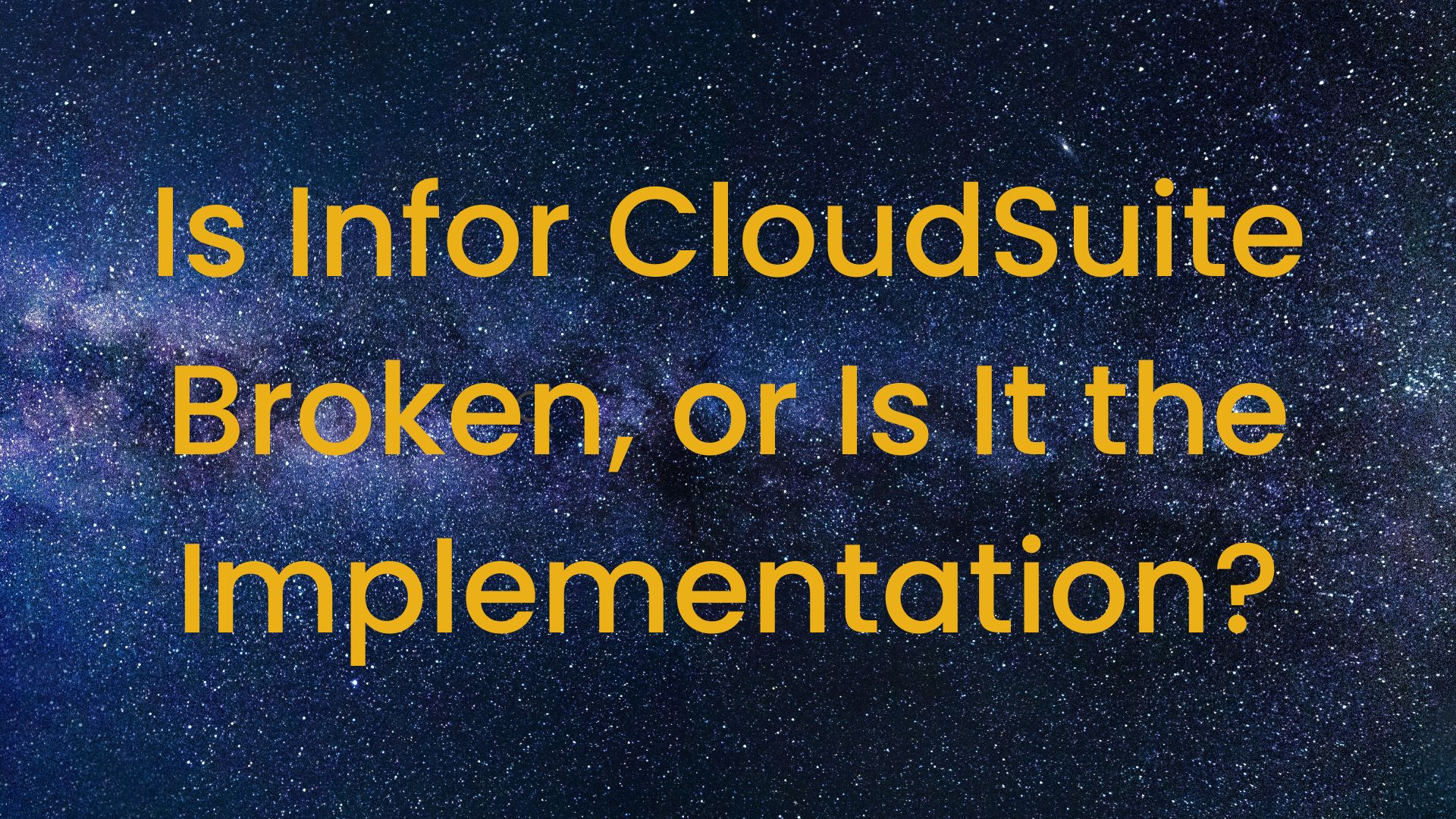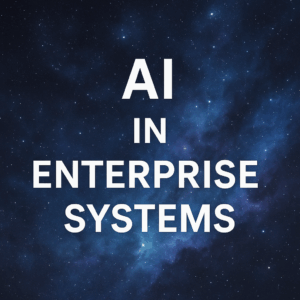We’re working with a handful of organizations right now that are struggling with their Infor CloudSuite implementations. In several cases, they’ve asked us to step in, remediate, and get things back on track. That naturally raises a question I hear a lot: Is Infor CloudSuite the problem, or is something else going on?
Short answer: In most cases, it’s not the software. It’s how the program is planned, staffed, and governed. Here’s what I’m seeing, and how to fix it.
Table of Contents
ToggleThe Real Issue: Product vs. Implementation
Infor is, first and foremost, a product company, not a services firm. That’s not a knock; it’s true of many ERP vendors. But it has practical consequences:
- Smaller service footprint and partner ecosystem than some competitors. There are capable partners out there, but the bench isn’t as deep, which can strain complex programs.
- Estimates and guidance often skew toward what it takes to install software, not what it takes to transform a business (change, data, integration, operating-model design).
When implementations stall, the instinct is to blame the product. In most rescue engagements I see, the root cause is program design and readiness, not core software defects.
Why Upper Mid-Market Programs Get Tricky
Most CloudSuite adopters we see sit in the upper mid-market, big enough to have complex processes, multiple sites, and industry nuance; lean enough that internal capacity is limited. A common misconception is that because CloudSuite isn’t SAP or Oracle, it will be “easier.”
It isn’t. Different? Yes. Easy? No.
That expectation gap drives under-scoped change management, optimistic timelines, and an overreliance on “we’ll configure it later.”
CloudSuite Isn’t a Silver Bullet (and It Shouldn’t Be)
CloudSuite is strong tech, especially for manufacturing and distribution. But like any ERP, it won’t:
- Redesign your processes for you
- Manage resistance to change across roles and sites
- Cleanse and map your data
- Eliminate the need for adjacent systems (you’ll still have integrations)
If you migrate dirty or unmapped data, you’ll get garbage outcomes, no matter the platform. If you skip organizational change, adoption will lag, no matter the platform. CloudSuite should be the core of a broader architecture, not the only tool in the toolbox.
Flexibility: Your Biggest Asset, and a Risk
Infor’s portfolio around CloudSuite (e.g., M3, SyteLine, LN) plus integration tooling (e.g., Infor Velocity) gives you real flexibility. That’s good news and bad news:
- Good: Open integration paths, room to tailor industry nuances, leverage AI/analytics you’ve licensed.
- Risk: Teams see what’s possible and start bending the software back to old processes. Flexibility becomes a proxy for avoiding change. Customizations multiply. Governance thins. Complexity spikes.
The pattern I see: the more flexible the platform, the more you need tight guardrails, future-state design, standards, decision rights, and a change playbook.
How to Tell If You Have a Product Fit Problem or an Implementation Problem
Ask (and answer) these before you switch platforms:
Signs of a product fit problem
- Core industry requirements flat-out cannot be supported without extreme workarounds
- Critical modules you counted on don’t exist or are materially immature for your use cases
- Demonstrated gaps remain after proof-of-concept with real scenarios and data
Signs of an implementation problem (most common)
- No Phase 0 (weak operating-model definition, vague scope, optimistic budget)
- Data is late/dirty, migration mapping is unsettled, and ownership is unclear
- Change management is an afterthought; training = “how to click,” not “how we work now”
- Customization creep to preserve legacy processes
- Architecture decisions lag; integrations and module sequencing are fuzzy
- Project governance is light; decision rights and escalation paths aren’t defined
If the second column describes you, switching products won’t solve it; you’ll just move the same problems to a new platform.
The Remediation Playbook
When we’re called to recover CloudSuite programs, we run a fast but thorough reset. At a high level:
Program Triage (2–4 weeks)
- Independent assessment of scope, plan, budget, and risks
- Heat-map by workstream (process, data, integration, change, testing)
- Decision log of critical gaps and “stop-the-bleed” actions
Phase 0—Belated but Essential (6–10 weeks, concurrent with triage fixes)
- Target Operating Model: what’s standardized vs. local, and why
- Process Standards & Guardrails: where flexibility lives, where it doesn’t
- Data Plan: ownership, quality rules, migration waves, cutover criteria
- Change Strategy: stakeholder mapping, role impacts, adoption KPIs
- Architecture & Sequencing: module path, integrations, test strategy
- Realistic Plan & Budget: internal staffing, SI scope, contingency
Governance & Discipline
- RACI with decision rights (who decides standards vs. site exceptions)
- Design Authority to curb customization creep
- Benefits and adoption dashboards (money/time outcomes, not just velocity)
Do Less, Better—Then Scale
- Time-box pilots with production-grade data
- Prove value in one or two domains (e.g., inventory, order-to-cash)
- Scale patterns to additional sites/functions by design, not by heroics
Final Thoughts & Resources
If you selected CloudSuite for sound reasons, don’t throw the baby out with the bathwater. First, determine whether you have a fit issue or an implementation issue. In most programs I see, disciplined planning and stronger change/data/governance turn things around without switching platforms.
If you want a vendor-neutral read on your current state, or help standing up a proper Phase 0 and remediation plan, my team at Third Stage can help. We’re independent and focused on outcomes you can defend.
Further reading
- Lessons from 1,000 ERP Implementations (free eBook)
- Phase 0 Checklist (what to decide before you build)
- Case studies on program recovery and post-go-live value capture
Let’s make your investment pay off, for the right reasons.






